Mera Peak is Nepal’s highest trekkable mountain, towering at 6,470 metres high. To reach it you’ll trek from Lukla through rhododendron forests and up high passes, heading up above the treeline into rocky valleys and icy glaciers. All this before you even reach base camp, where you’re surrounded by the serrated peaks of the Himalayas.
“It’s becoming more popular by the day,” says climbing guide Janbu Sherpa. “People who are coming here for the Everest Base Camp trek or the Langtang Valley trek also want to climb a high mountain, because that’s what Nepal is known for. It also attracts people who want to try a 7,000 metre high mountain or above - Mera Peak is where they test themselves.
The view is amazing, something you can’t put into words.
“When you get to the summit you can see a lot of 8000 metre high mountains like Everest, Lhotse and Cho Oyu. The view is amazing, something you can’t put into words.”
Janbu was born in Soulukhumbu, enroute to Mera Peak, and is a climbing Sherpa who has ascended Mera Peak on numerous occasions. We spoke to him and Dakman Thapa - who started his career as a porter but is now a senior trekking guide with many summits under his belt - about climbing Mera Peak. Here’s everything you need to know to plan a trip.
Please note: On the 1st April 2023, the Nepal Tourist Board (NTB) made changes to the trekking laws for all foreign trekkers, cyclists, and mountain climbers visiting Nepal's mountain regions and national parks. All trekkers (solo or in a group) must now be accompanied by a licensed guide. To learn more about what this means for you, read our update on the Nepal trekking requirements.
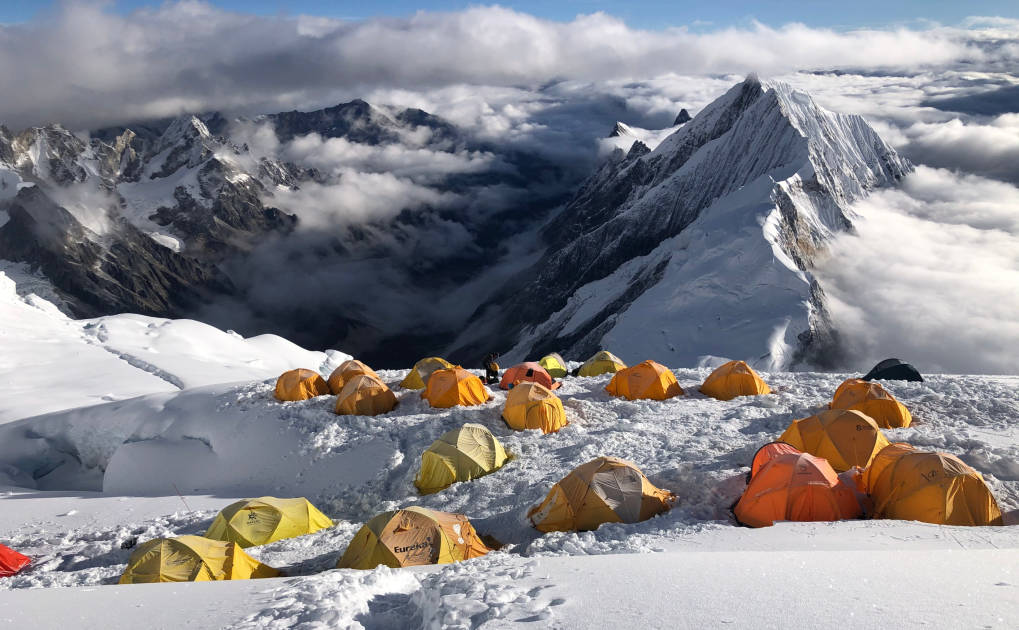
Where is Mera Peak?
Mera Peak is a peak in the Mahalangur section of the Himalayas, in northeastern Nepal. It’s on the fringe of the famous Khumbu region, overlooking some of the world’s highest mountains - Mount Everest (8848.86m), Kangchenjunga (8586m), Lhotse (8516m) and more.
How Hard is it to Climb Mera Peak?
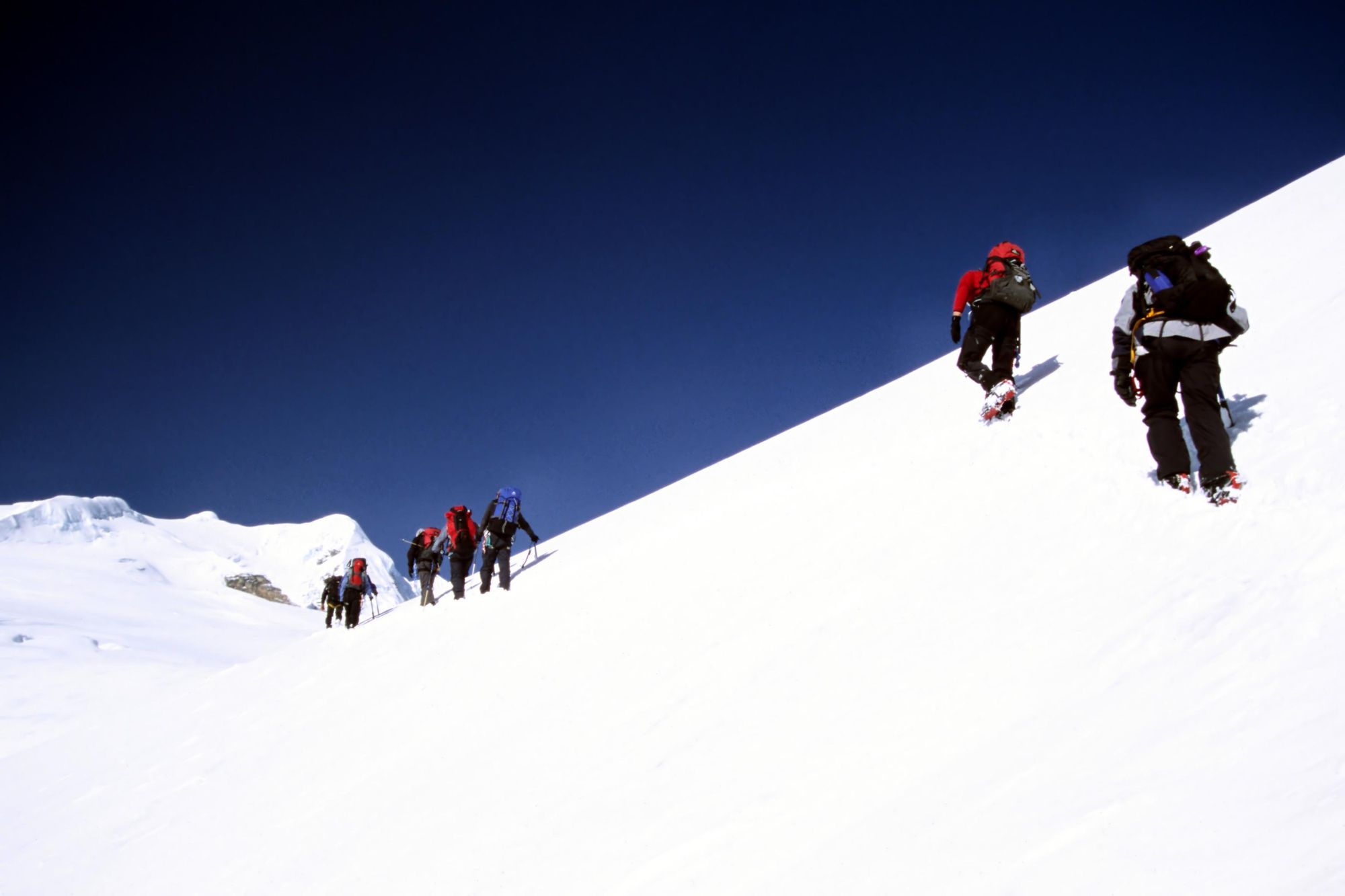
Mera Peak might not require technical mountaineering skills, but it shouldn’t be underestimated - it’s a challenge that will push you to your limits, with high altitude hiking for up to 10 hours a day. Before you even reach Mera Basecamp (5,300m) you will have been trekking for between seven to nine days from Lukla (2,860m) - an elevation gain of 2,440 metres.
“The altitude is one of the biggest challenges,” Dakman says. “But we do succeed. The reason is that we walk really slowly, taking it step by step. Even over 100 metres in altitude you’ll feel the difference.
“The last time I climbed Mera Peak I was with two young people who were very fit at the beginning, and some older people who started out very slow. But the end result was that the older people succeeded and the two younger ones didn’t. That’s because they were trying to do more exercise on the way, and not conserve their energy. But you can’t fight with the mountains, or nature - if you go too fast you just get altitude sickness. You must always listen to your guide if they tell you to slow down.”
You can’t fight with the mountains, or nature - if you go too fast you just get altitude sickness.
Janbu says that around 1,800 people climbed Mera Peak in 2022. The success rate is around 80%, and the main reason for a failed summit attempt is altitude sickness. To improve chances, he recommends spending plenty of time acclimatising.
“The general rule of mountaineering is that you don’t sleep more than 500 metres higher than the night before, if possible,” he says. “Due to the geography here, and the position of the tea houses, it’s not always possible. When you stay at Khare it’s 4,900 metres, and lots of groups then sleep at Mira High Camp at 5,900 metres - nearly 1000 metres of altitude gain. What we do differently from other companies is stay at Mera Base Camp instead - that’s 5,350 metres. Then we do a day hike up to 5,600 metres and return to base camp. This helps you acclimatise and increases success rate.”
How Many Summits Does Mera Peak Have?
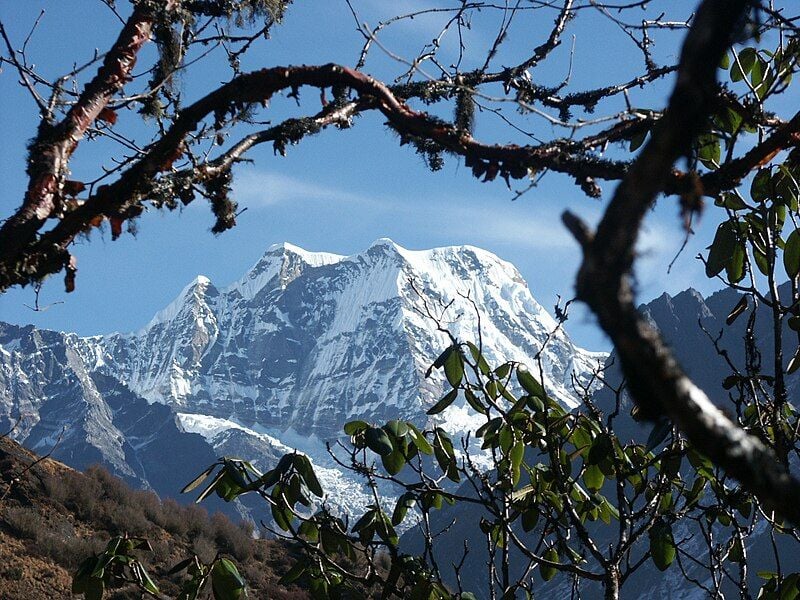
Mera Peak actually has three summits: Mera North (6,476m/21,247 ft); Mera Central (6,461m/21,198 ft); and Mera South (6,065 metres/19,898 ft). It’s Mera Central which is commonly ascended - Mera North is more technical, and requires around three hours of extra effort. The route description below involves an ascent of Mera Central.
Climbing Mera Peak: The Route
The Mera Peak trek begins in the town of Lukla and ascends upwards, passing a town named Kothe (3,580m). There is only one route up to the top of Mera Peak from Kothe, but there are two different trails from Kothe to Lukla - one via the Hinku Valley and another which takes you over the steep Zatra La pass (4610m).
You’ll find some tour operators taking trekkers straight over Zatra La from Lukla (2,860m) but Janngu and Dakman don’t recommend such a huge altitude gain on the first day. Instead, they recommend trekking via the Hinku Valley to Mera Peak, and heading back to Lukla via Zatra La. This is that route.

Day 1: Lukla (2,860m) to Paiyan (2,610m)
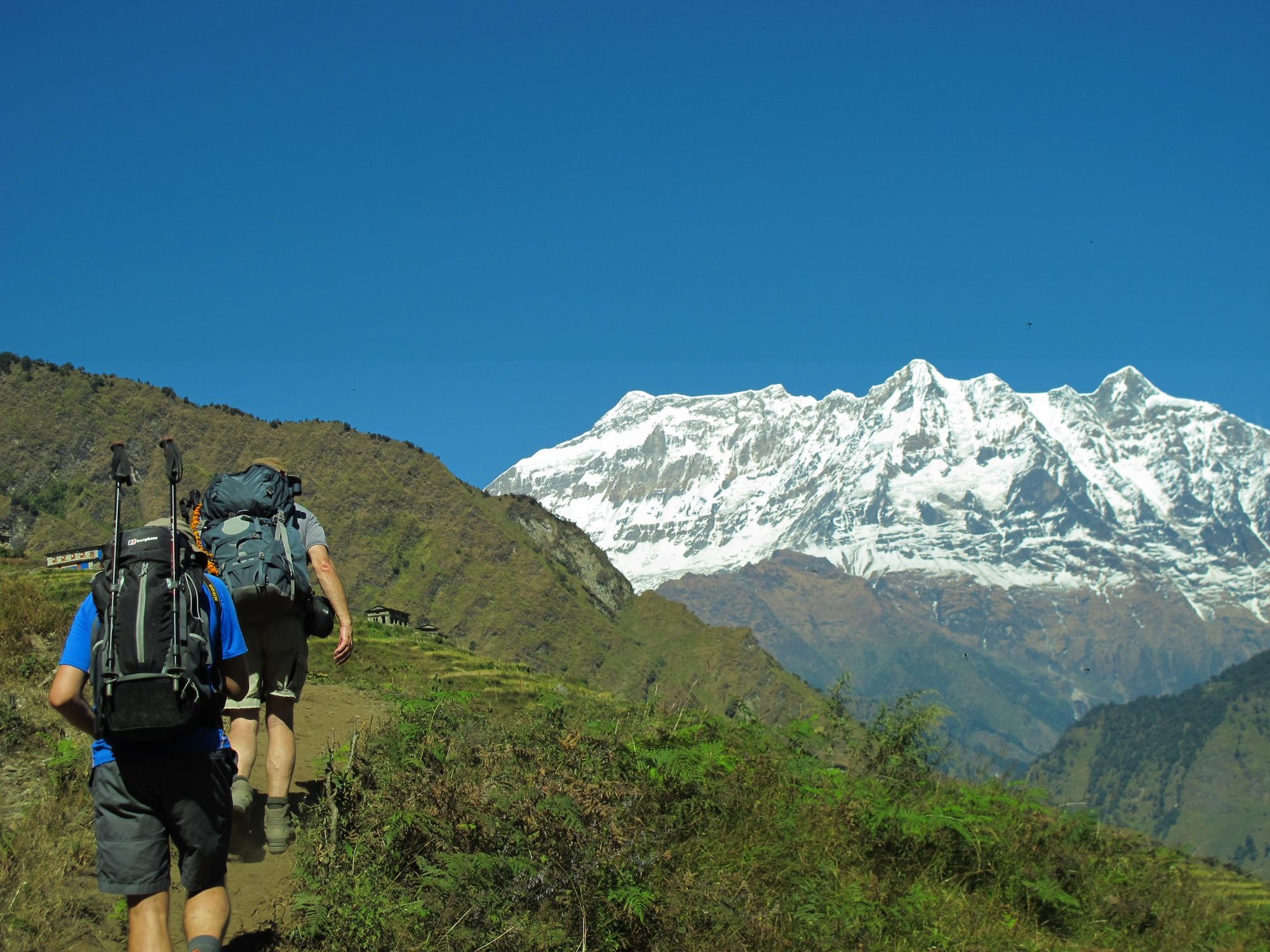
Hiking time: 4-5 hours
Distance: 7.4 miles/12 km
Ascent profile: 733m up/680m down
You’ll likely arrive in the capital of Kathmandu, drive to Ramechhap and from there take a morning flight to Lukla. After a quick cup of tea, you’ll hit the trail.
“You start off by heading downhill to Surke Village - approximately 500 metres,” Dakman says. “After lunch we will ascend again, around 500 metres. The trail is very much up and down. If it is rainy and there’s lots of water it will be pretty slippery - if not, it’s pretty good.
“At the end of day one we will get to Paiyan, a little town with a lot of greenery and Sherpa living there.”
Day 2: Paiyan to Panggom (2,804m)
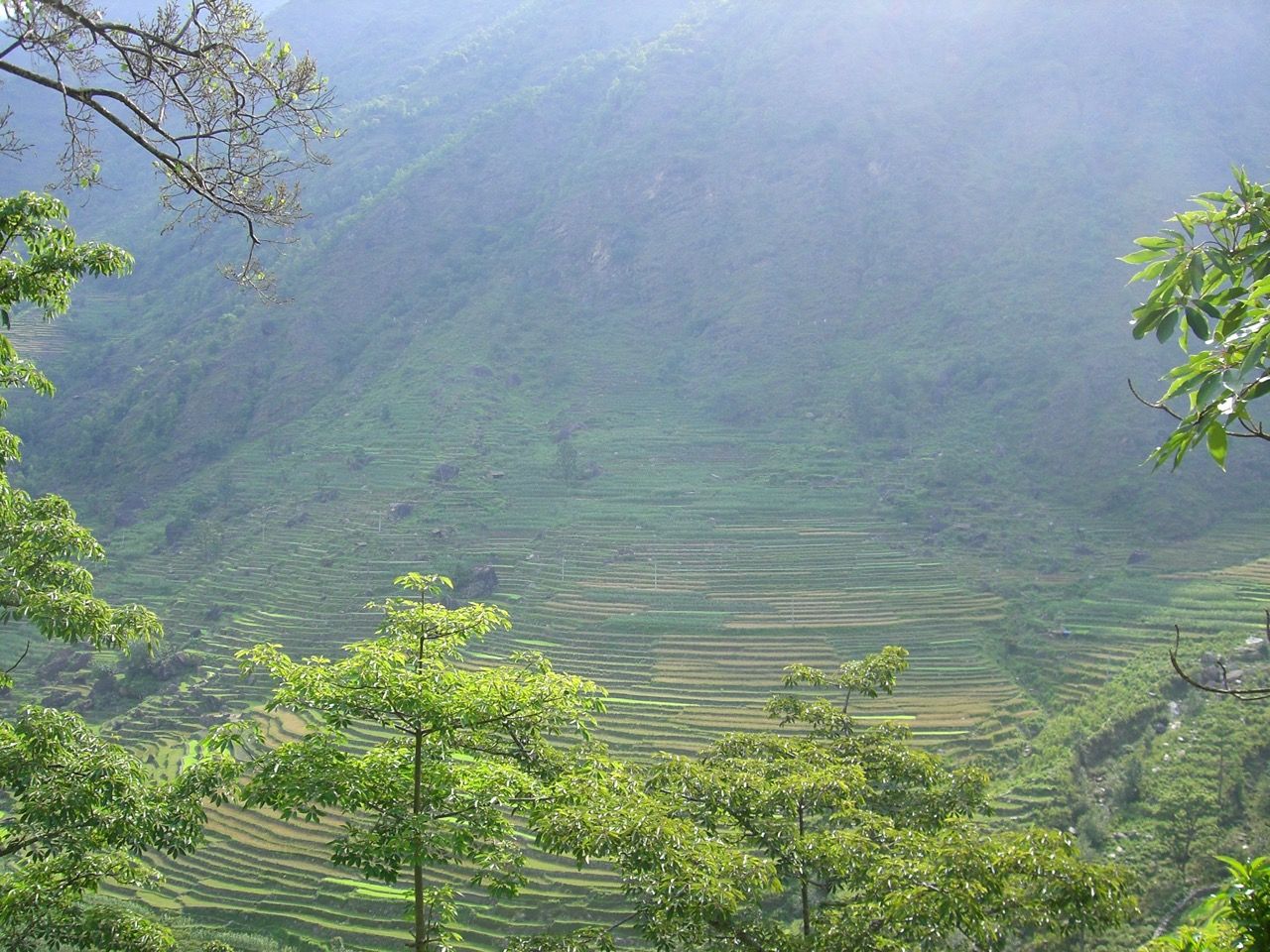
Hiking time: 5-6 hours
Distance: 8 miles/13km
Ascent profile: 893m up/320m down
“On the second day we will trek from Paiyan to the small village of Panggom, which is approximately seven to eight hours of walking,” Dakman says. “The vegetation is similar to day one - we will see lots of rhododendron forests - and it’s a similar trail; lots of ascent and descent with a gain.”
One of these ascents is Khari La (2860m), a pass strung with prayer flags and with a view of the surrounding forest. There’s also a good view when you arrive in Panggom, of the glaciated peak of Numbur Himal.
Day 3: Panggom to Ramailo Danda (3276m)
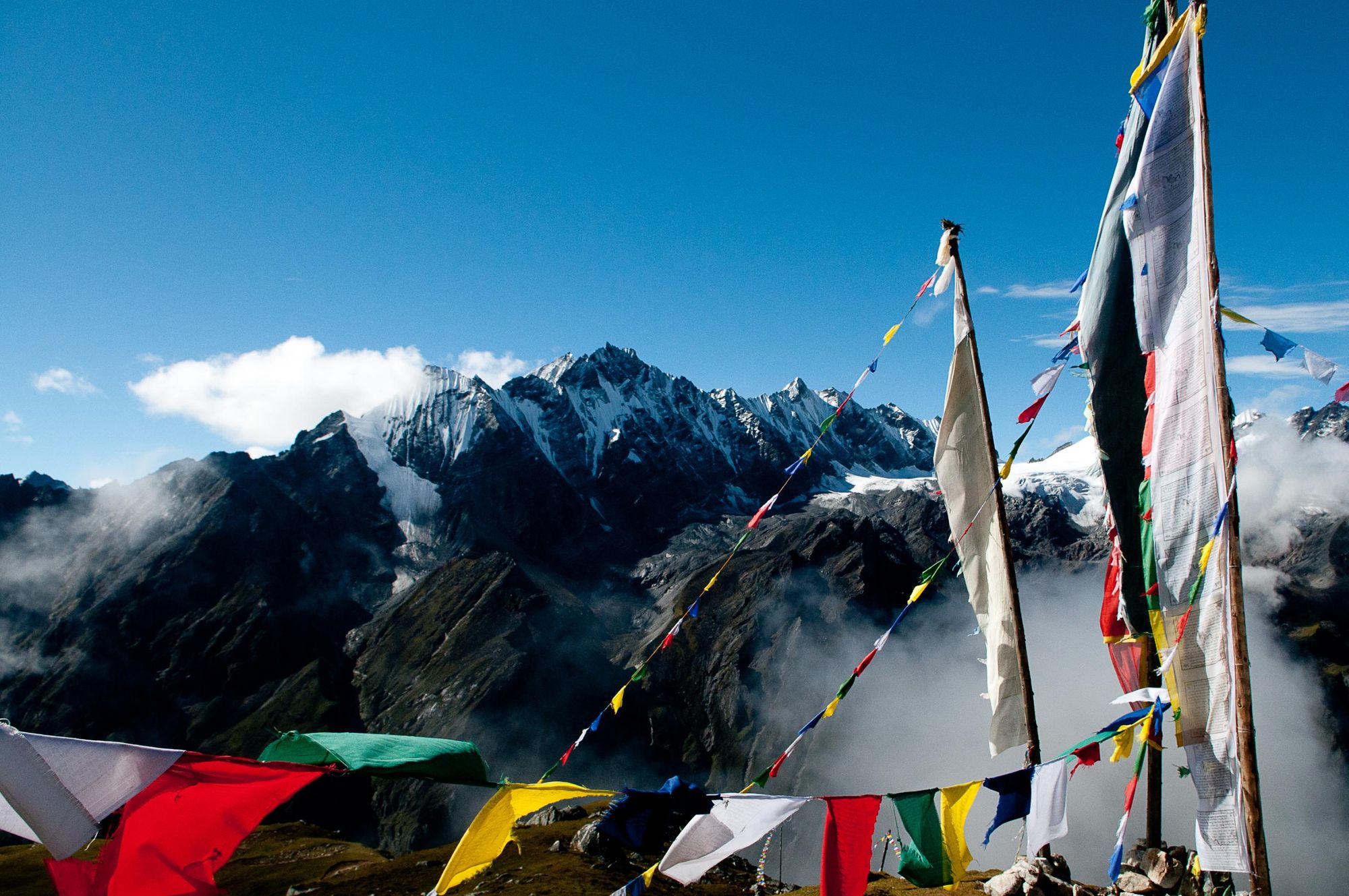
Hiking time: 5-6 hours
Distance: 7 miles/11km
Ascent profile: 899m up/720m down
You’ll climb uphill through the forest to Panggom La pass, where you’ll have a view of the Hinku and Khari Khola valleys. Descend to the pretty Sherpa village of Sibuje for a tea break.
After that you’ll cross a small river before a steep uphill climb through the forest to Ramailo Danda ridge - for the first time you’ll be able to see the serrated silhouette of Mera Peak in the distance.
Day 4: Ramailo Danda to Chhetra Khola (3122m)
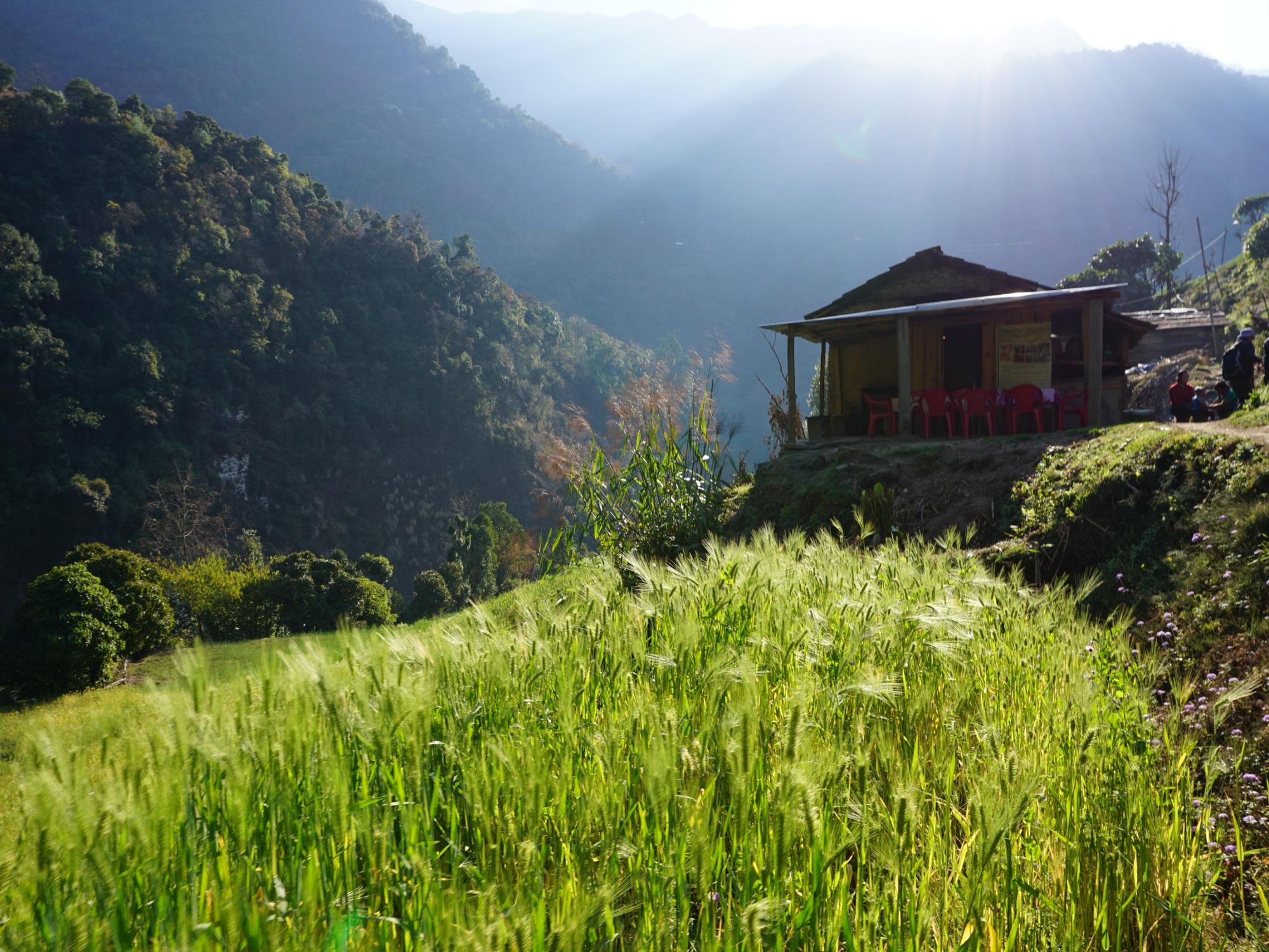
Hiking time: 4-5 hours
Distance: 6 miles/10km
Ascent profile: 590m up/600m down
The day begins with a descent through the forest down a narrow track until you reach Temba Khola River, where you’ll find a couple of basic tea houses for a break.
“After that the track goes up, up, up - it feels like it's never ending,” Dakman says.
The higher altitudes you are climbing at will make you feel breathless more quickly, so remember to take it slow. Eventually you’ll arrive at Chhetra Khola village, where you’ll stay overnight.
Day 5: Chhetra Khola to Kothe (3580m)
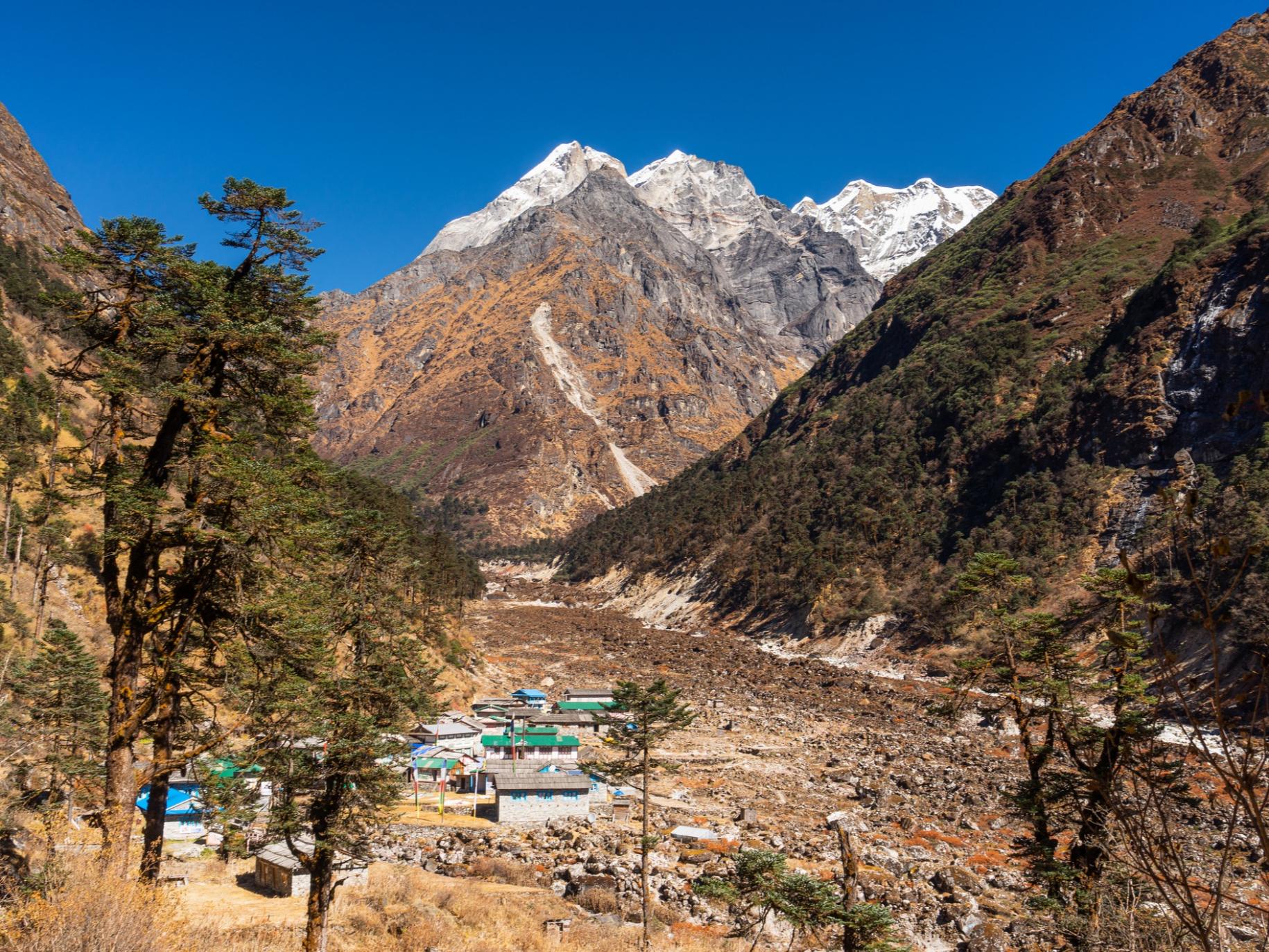
Hiking time: 6 hours
Distance: 7 miles/11km
Ascent profile: 992m up/760m down
You’ll continue on an up-and-down trail through bamboo and fir forest, crossing small streams as you go and stopping at the village of Takhto for lunch. You’ll continue through sub-alpine forest for another couple of hours, but as you reach the Inku Khola River you will notice the dramatic change in landscape. You’ll find yourself in a broad rocky valley with mountains rising on either side.
Day 6: Kothe to Thangnak (4358m)
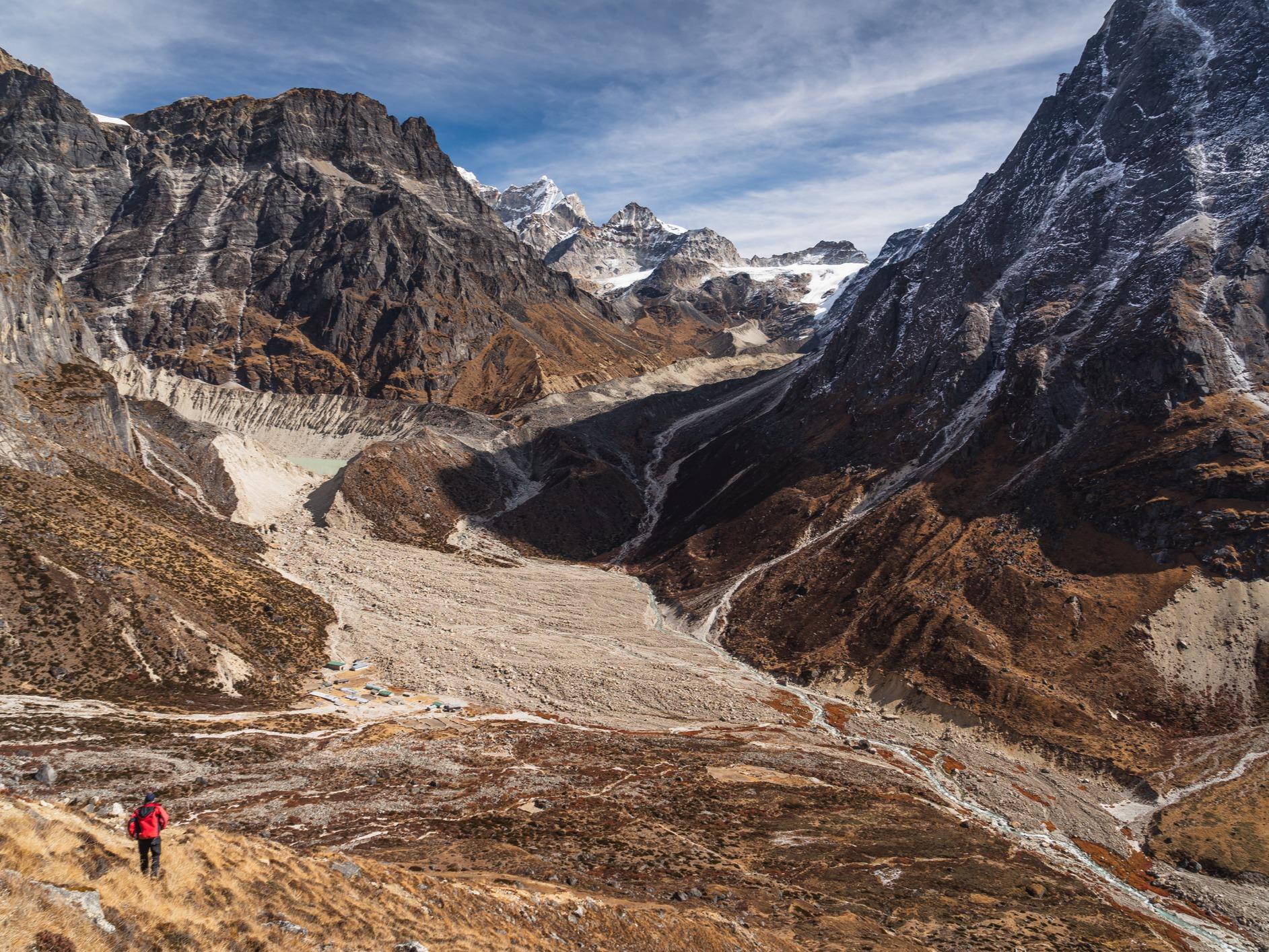
Hiking time: 4 hours
Distance: 7 miles/11km
Ascent profile: 718m up/760m down
“From Lukla to Kothe the track is very much ‘ups and downs’, through a narrow valley. But after Kothe the route becomes wide and open,” Dakman says. “After Kothe we follow the bank of the river. It’s a really beautiful place - we start to see some white mountains from there.”
You’ll notice the change in landscape - you’ll see high-altitude pastures speckled with wildflowers and junipers. You’ll hike through these pastures until you reach the broad valley of Thangnak, where you’ll spend the night in a summer grazing village.
Day 7: Thangnak to Khare (4659m)
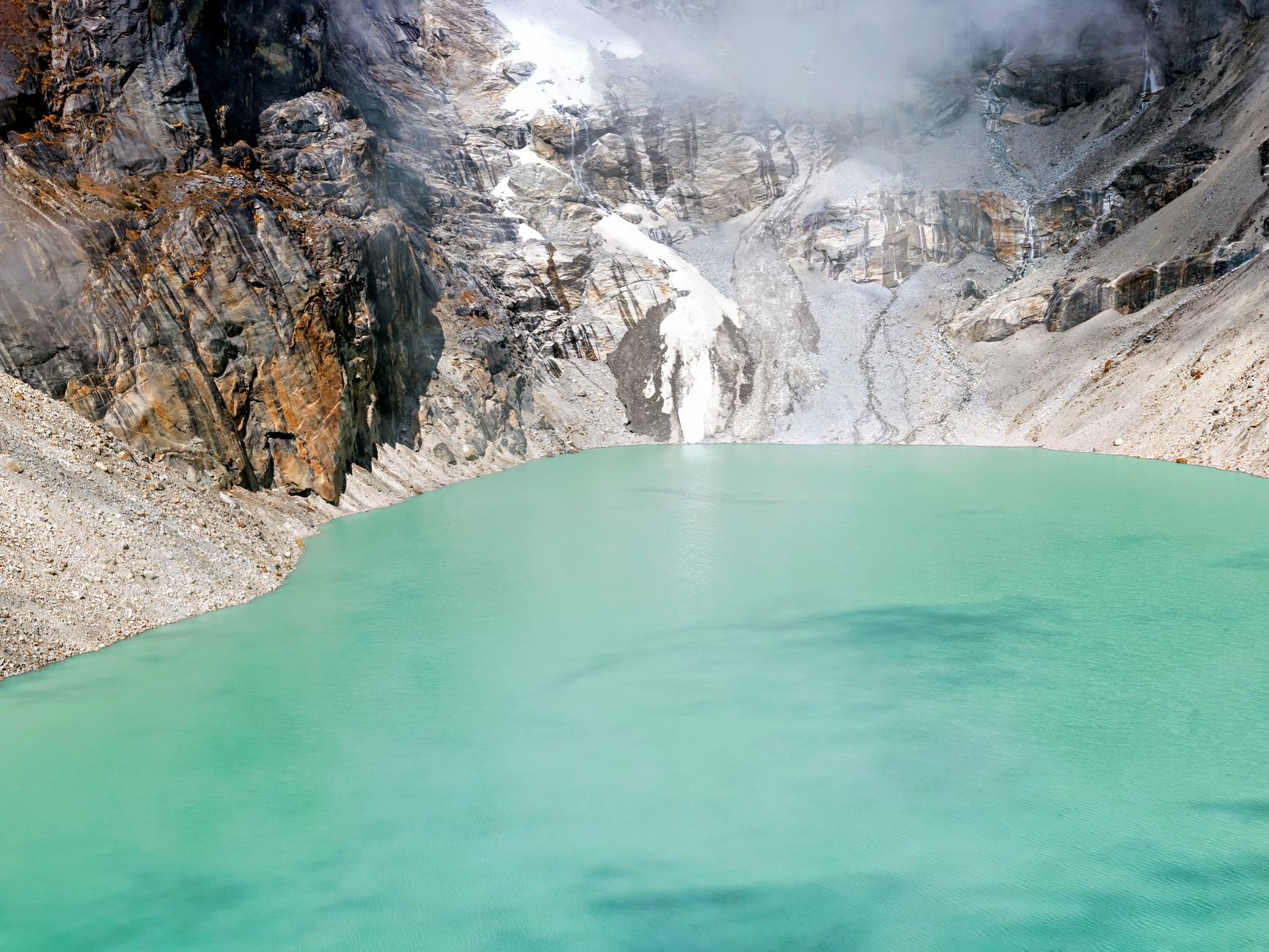
Hiking time: 3-4 hours
Distance: 4.6 miles/7.5 km
Ascent profile: 687m
You’ll feel the altitude as you climb higher today - make sure to stay hydrated and take frequent breaks. Climb along the river and over a bed of rock deposit to Sabai Tsho, a glacial lake with Kyasar Peak looming over it. You’ll then follow a trail that winds up between Mera Glacier and a small stream. Continue on over this rugged terrain to Khare, where you’ll stay in a lodge to make sure you’re rejuvenated for the trip ahead.
“Once we arrive in Khare you will meet the climbing guides,” Dakman says. “They will show you how to put on the gear and use the crampons. They also check to make sure everyone’s well equipped for the summit - here, there is a shop in a teahouse where you can rent gear such as boots and down jackets.”

Day 8: Khare Acclimatisation
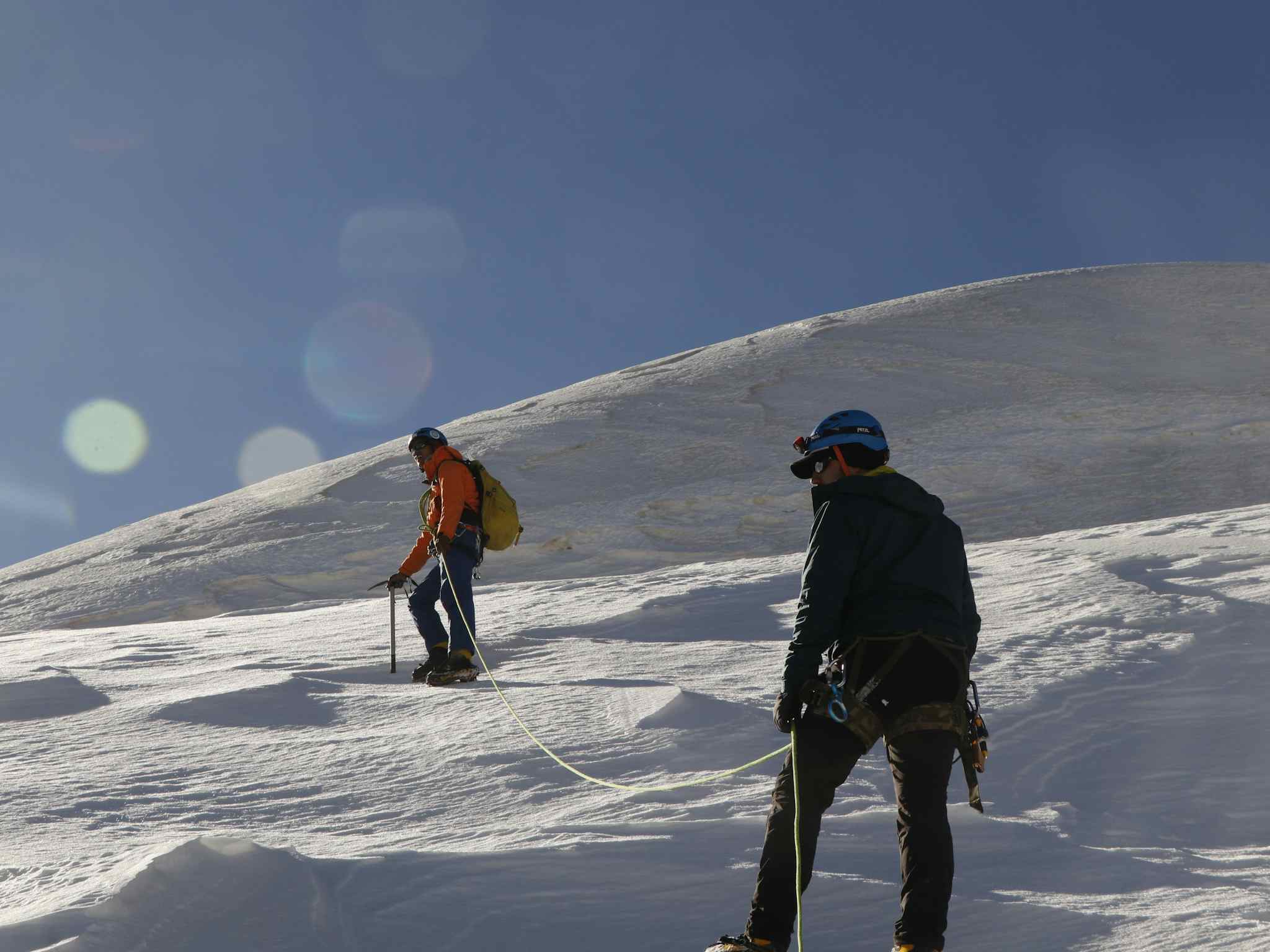
Today is an acclimatisation day, to increase your chances of summiting success. You’ll also have a training session with your climbing guide, who will show you how to use crampons, harnesses, rope, ascenders and descenders, as well as ice axes. They’ll also give you advice on staying safe in the mountains. This is a good time to ask any questions you might have about the summit push.
Day 9: Khare to Mera Base Camp (5350m)
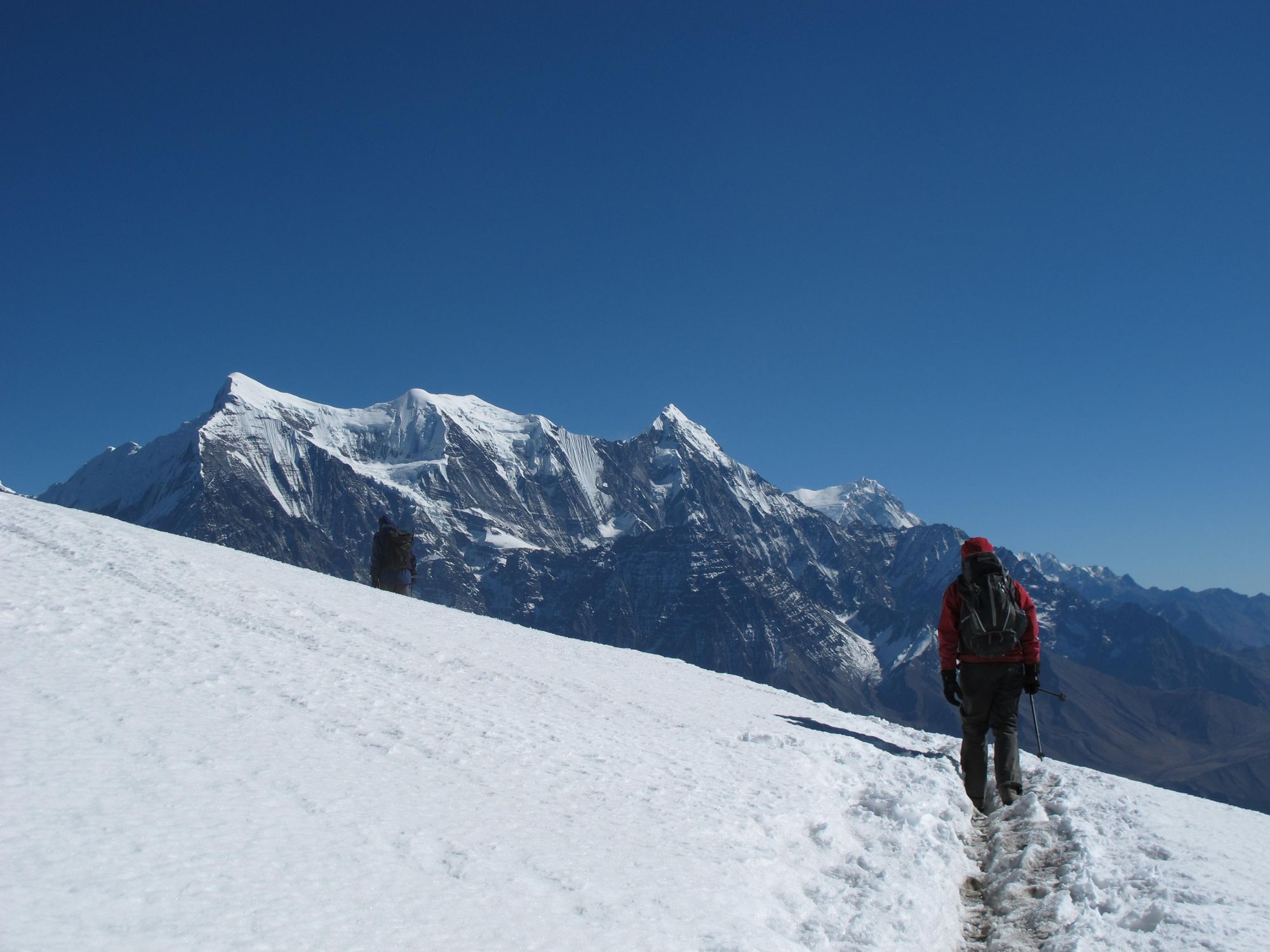
Hiking time: 4 hours
Distance: 2.4 miles/4km
Ascent profile: 370m up/65m down
From Khare, follow a mountainside trail - if there’s snow on the path, you’ll need to use crampons. You’ll begin hiking towards Mera Peak’s southern face, negotiating the icy moraine of glaciers on your way - ropes might be used to assist you. Finally you’ll climb over Mera La pass, climbing along the ridgeline to Mera Base Camp, where a tented camp is already set up for you.
Day 10: Mera Base Camp to Mira High Camp (5780m)
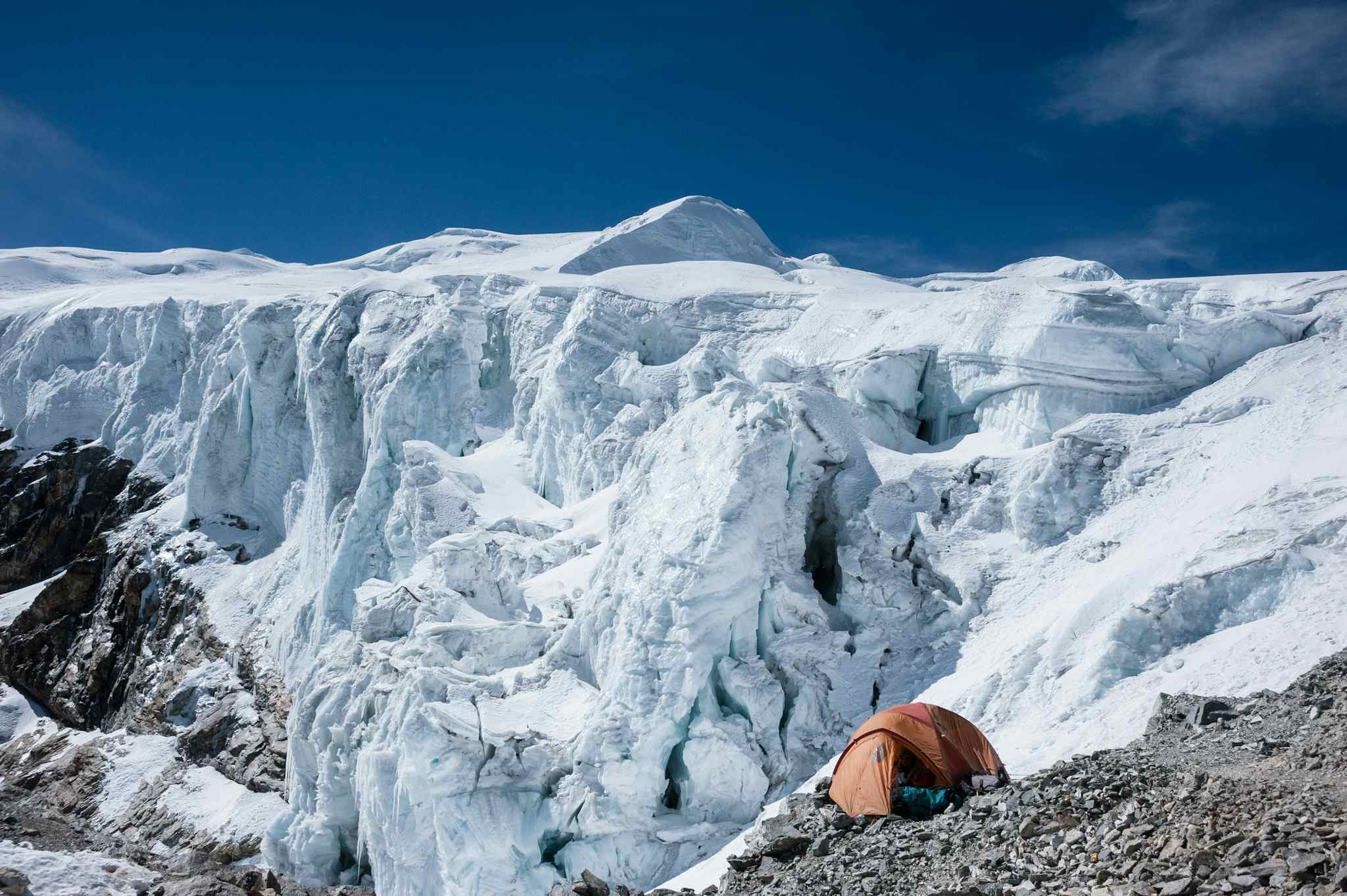
Hiking time: 4 hours
Distance: 2.1 miles/3.5km
Ascent profile: 430m up
“Today you travel from Mera Base Camp to Mira High Camp,” Janbu explains. “This is a gentle slope. There’s not much in the way of difficult terrain, with few visible crevasses on the route.”
Camping at such high altitude is challenging, and cold - the guides refer to it as “an experience”, but a hot meal and a rest is important before the final summit push.
Day 11: Mira High Camp to Mera Peak (6461m) and back to Khare
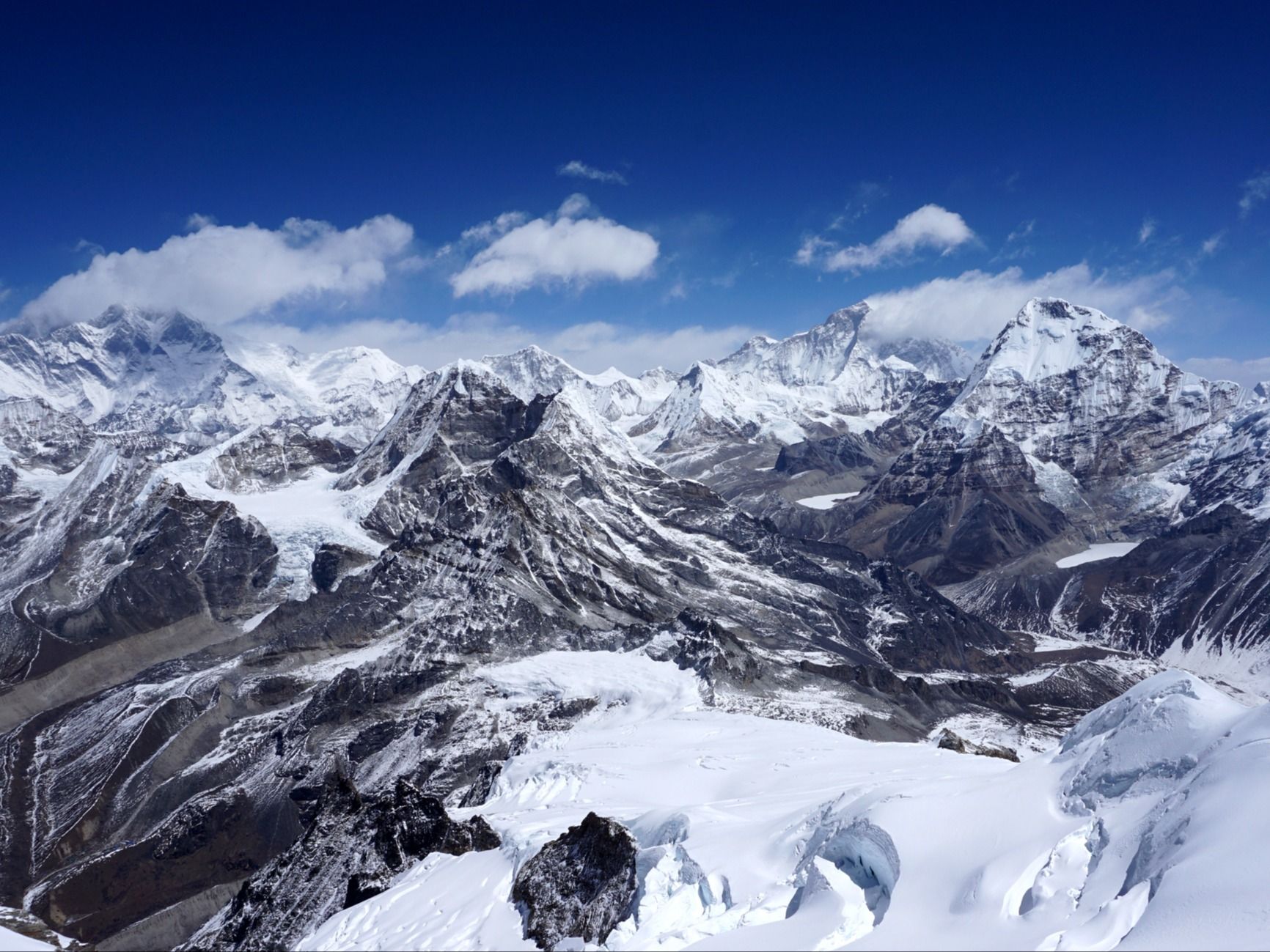
Hiking time: 10 - 11 hours
Distance: 6 miles/10km
Ascent profile: 681m up/1351m down
Today’s the big one - climbing Mera Peak’s central summit and then heading all the way back down to Khare.
“You’ll start the climb around one in the morning, just because the weather in the mountains is so changeable, especially later in the day,” Janbu says. “From high camp to the summit is around three kilometres. From there it is a trekking peak - we walk a very long way until at around 100 metres from the summit is a rope which you use to climb up.
“When we get to the top there’s a 365 degree panoramic view if the weather is clear. We can see five peaks of over 8000 metres, and many more smaller ones. Then you turn around and head back down to high camp, where there will be some nice food waiting for you, like hot soup. After that it’s all the way back down to Khare, so a long descent.”
Day 12: Back Up Summit Day
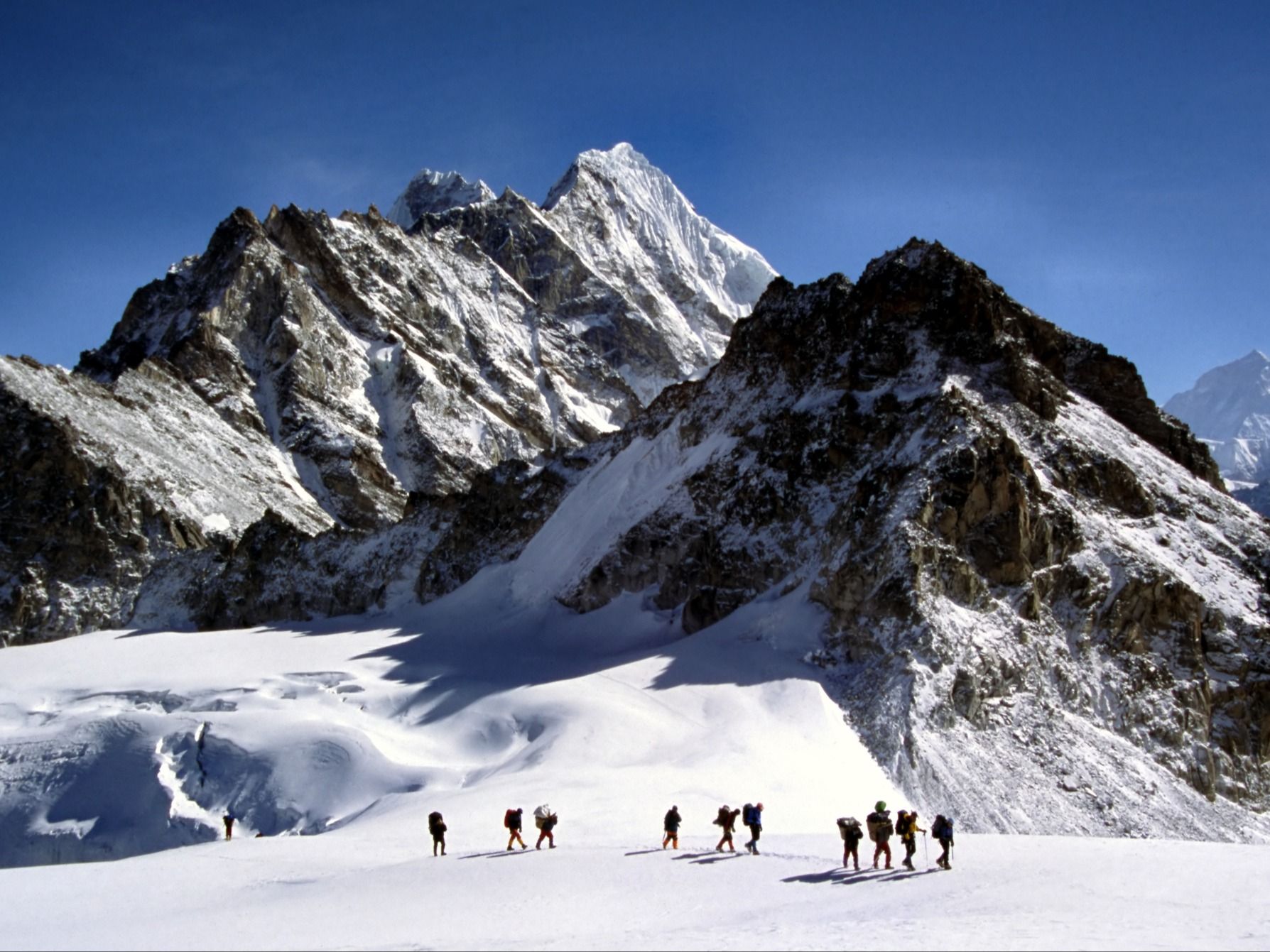
Most treks up Mera Peak will feature a backup summit day, just in case the weather means it isn’t possible the day before. If this isn’t needed, you can either try and reschedule your flight to Kathmandu for a day earlier, or break down the final day of trekking (day 15) into two days.
Day 13: Khare to Kothe (3580m)
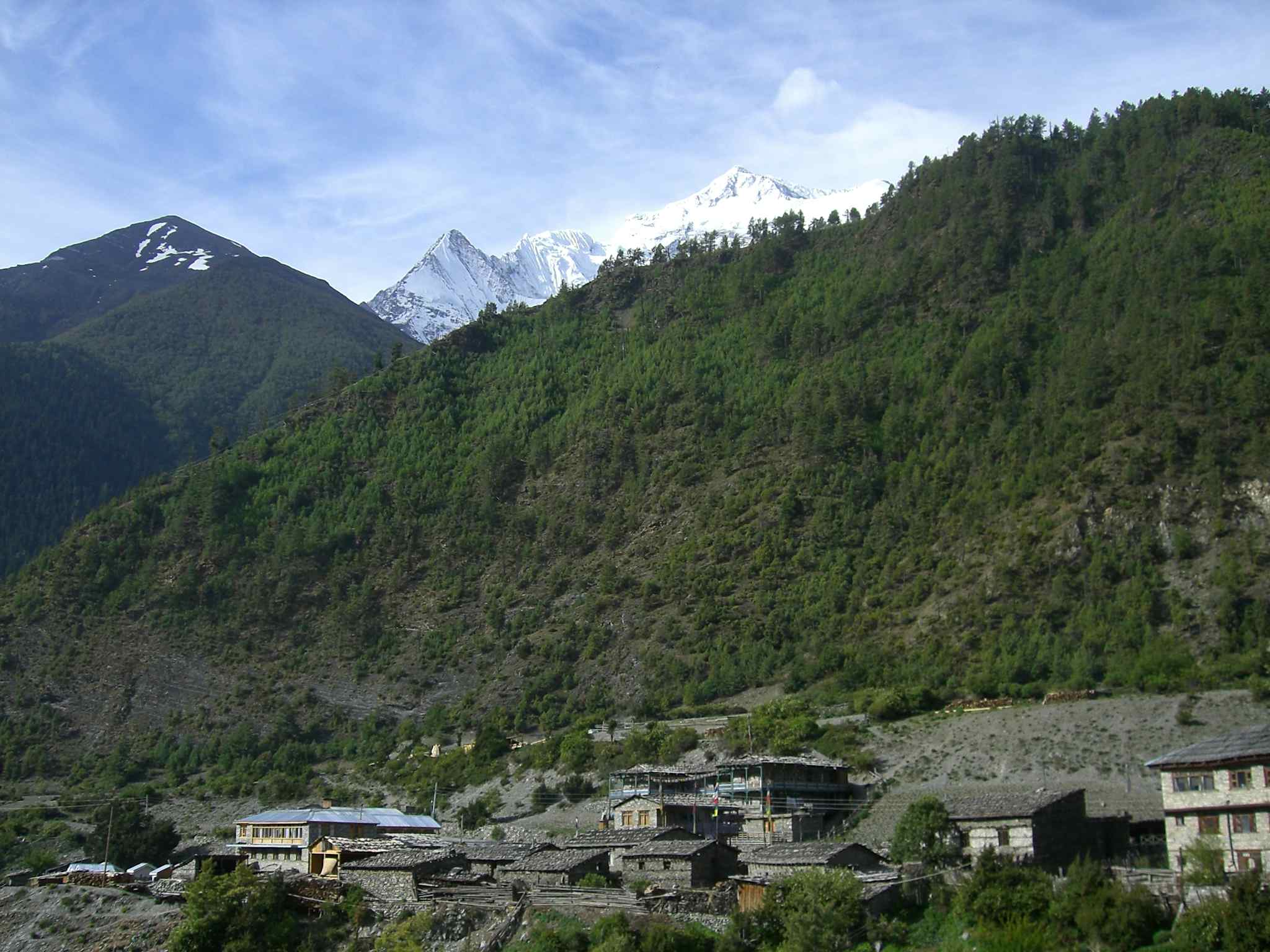
Hiking time: 7-8 hours
Distance: 7.4 miles/12km
Ascent profile: 1405m down
A gentle ascent down the trail from Khare to Kothe, and to lower altitudes. You’ll be following the same route as you did on the ascent.
Day 14: Kothe to Thuli Kharka (4700m)
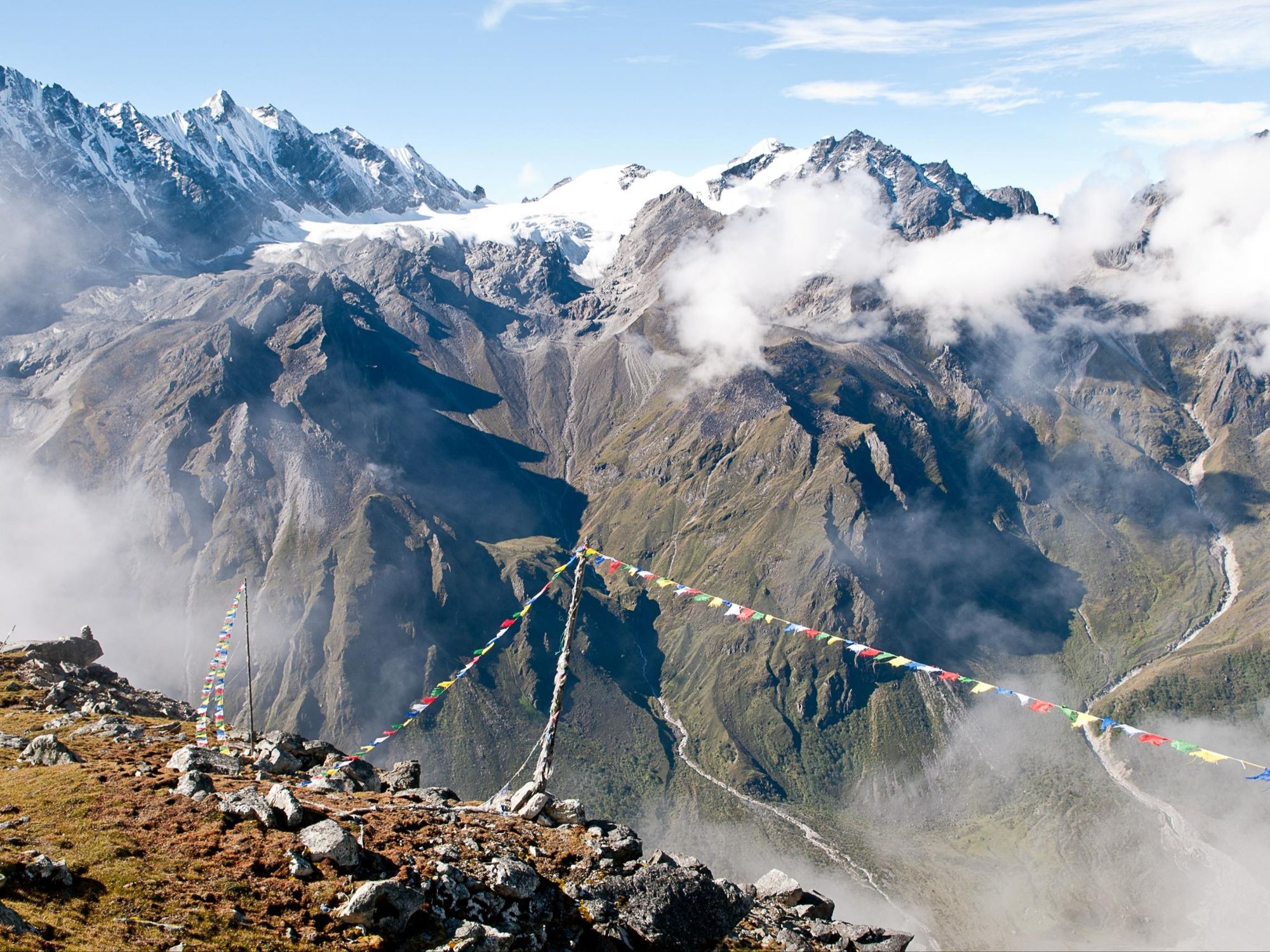
Hiking time: 7-8 hours
Distance: 7.4 miles/12km
Ascent profile: 1260m up/320m down
You’ll hike to the village of Takhto. The trail then climbs sharply upwards and ascends along a ridge - through the forest and then up above the treeline. You’ll continue up over a small pass and descend to Thuli Kharka, where there’s a basic hut you can spend the night in. The views of the surrounding peaks are amazing from here.
Day 15: Thuli Kharka via Zwarta La Pass (4660m) to Lukla
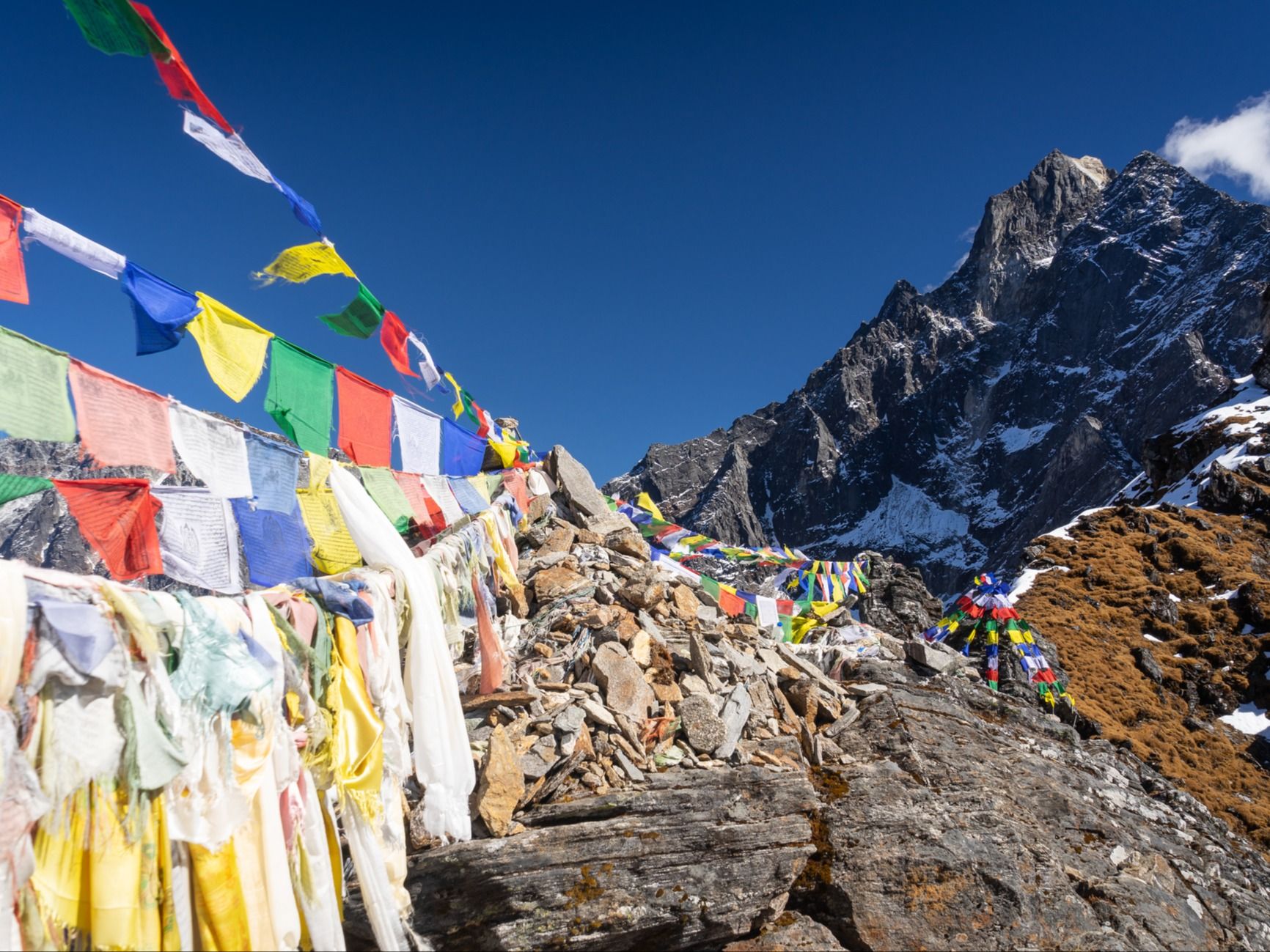
Hiking time: 9-10 hours
Distance: 7.4 miles/12km
Ascent profile: 200m up/1910m down
Today you’ll return to Lukla via the Zwarta La pass, on a tough day with almost 2000 metres of descent.
“On the way back you have to cross one pass, called Zwarta La - that is also a challenge and quite technical,” Dakman says. “If it is snowing it's very slippery, and quite steep. So we need to fix the rope there. The climbers help us fix the rope and we slowly, one by one, climb down to the safe point. That is another big day, actually - around 10 hours, and lots of downhill.”
The last stretch is a slightly more gentle downhill trail through a forest and across a suspension bridge. Then you’ll be back in Lukla, which will feel much busier after so long spent in the mountains.
Accommodation on the Mera Peak Trek
Tea Houses
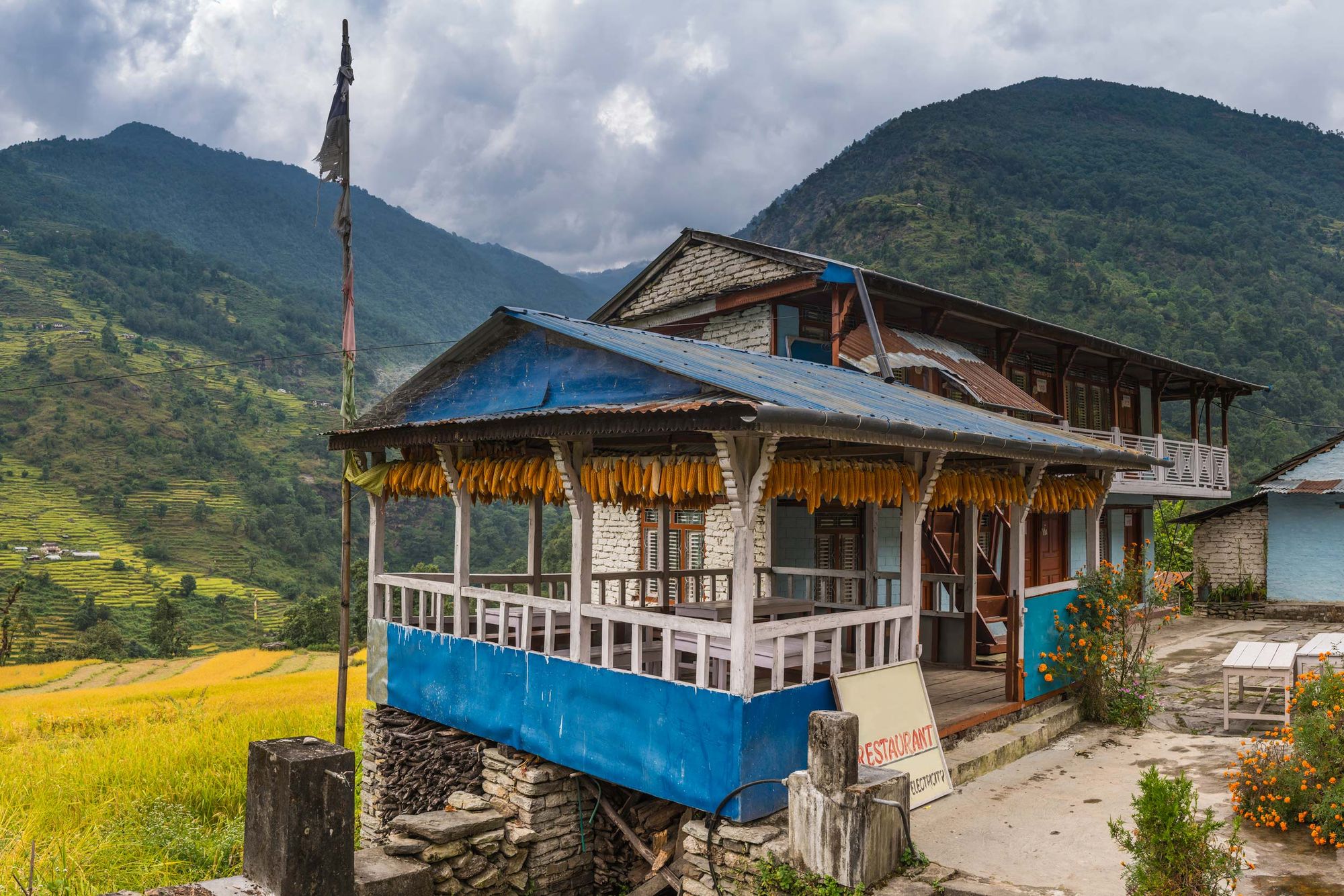
For most nights during your trek, you’ll spend the night in tea houses - rustic mountain huts - run by local Nepali families. They offer basic accommodation in twin share rooms or small dormitories, and there is usually a communal lounge with a stove, where you can stay warm and chat to other trekkers. In some tea houses you will be able to charge phones and cameras for a small fee.
Toilet facilities vary from teahouse to teahouse. Sometimes there are western sit-loos. Sometimes Asian squat or basic long-drop - you'll likely encounter all three types on a Nepal trek, whether at your overnight tea houses or at lunch stops along the trail. Some have flushes but more commonly you'll find a bucket of water to swill the loo with. In all toilets you’ll be expected to provide your own toilet paper, so bring some with you - it can be bought at some tea houses but is expensive.
You go to a teahouse at Khare and you can’t quite believe that you’re getting such good hospitality
Food is simple but filling. Think bread, porridge and omelette for breakfast, and fried rice, noodles, momos (Nepalese dumplings) and dal bhat - lentils, rice, vegetables and pickles. You might find you lose your appetite at high altitudes, so make sure to eat even if you aren’t hungry.
But although these tea houses might be basic, don’t underestimate the welcome you’ll receive when you arrive.
“I like that all of us are doing seven, eight days of really hard walking in this mountain landscape - then you go to a teahouse at Khare and you can’t quite believe that you’re getting such good hospitality,” Janbu says. “It becomes a major attraction for the trekkers. Every time you go in one you get refreshed, with new energy for the summit.”
Campsites
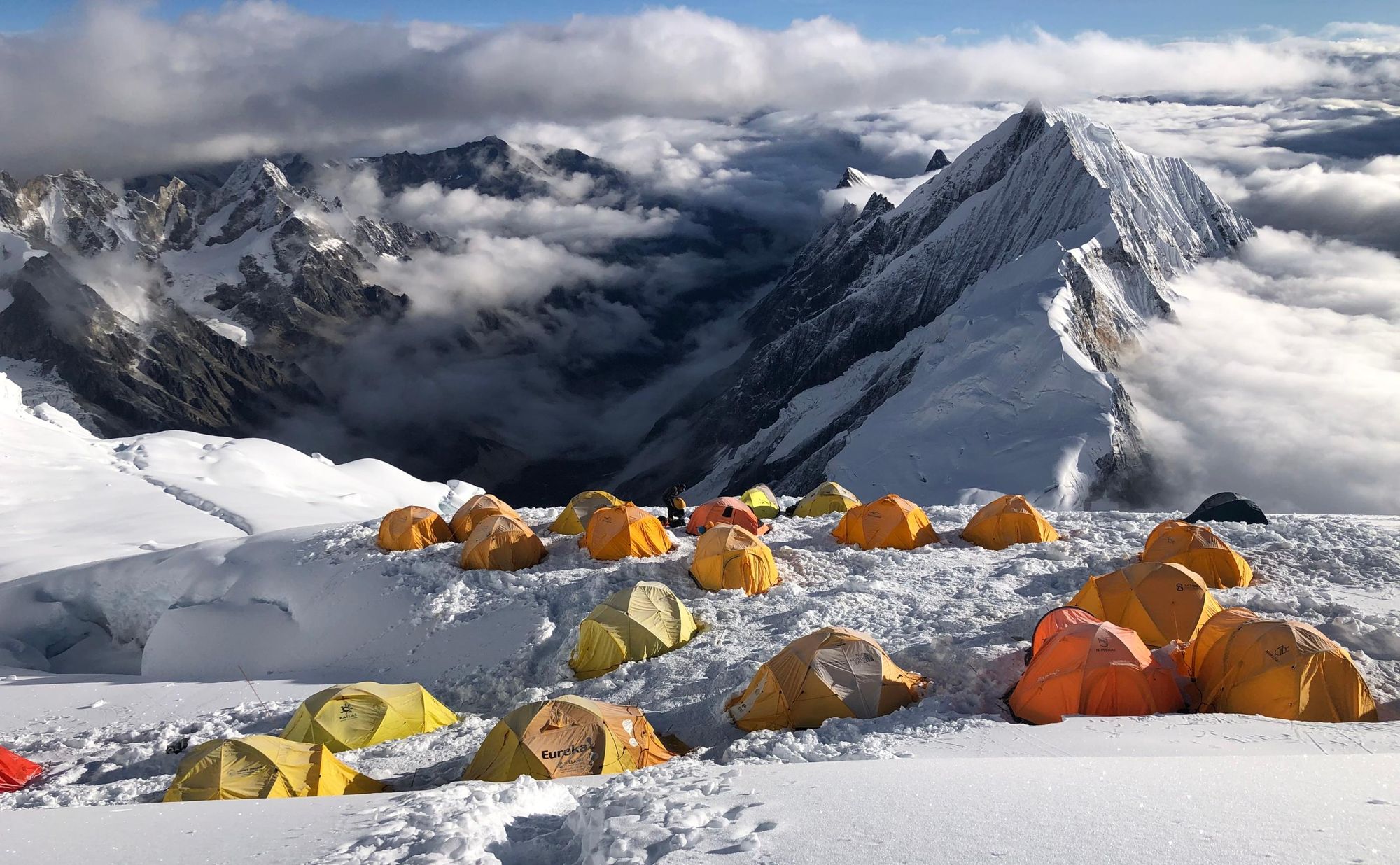
There are two campsites on the trip - Mera Base Camp (5,350m) and High Camp (5,780m). The tents here are set up permanently for the season, along with a mess tent - you will be greeted with hot tea and cookies when you arrive, followed by a hot meal. You'll also find a couple of long drop toilets here - but no showers.
It gets cold here, especially when the sun goes down - by that point you’ll need to be tucked into your sleeping bag, and wrapped up in your warmest layers.
What Should I Pack for my Mera Peak Trek?
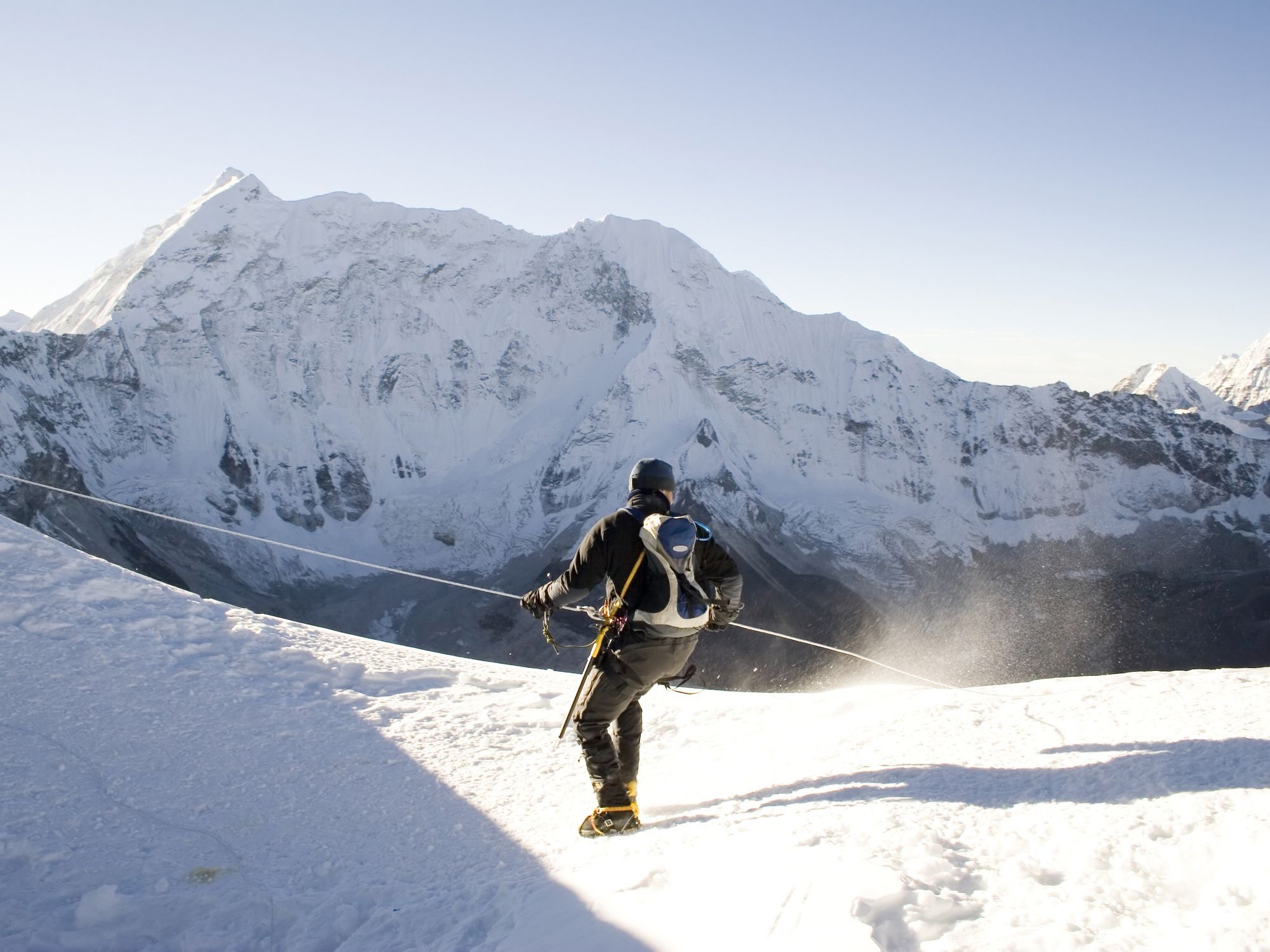
For your trek up Mera Peak you will be provided with all camping equipment - tent, camping mattress - and climbing gear (ice axe, ascender, descender, climbing helmet, harness, carabiners, crampons, prusik rope, snow bar, tape sling). However, if you’ve climbed before you might like to bring your own climbing harness and carabiners.
You will, however, need to bring your own B2 climbing boots, compatible with C2
crampons. Alongside this, you’ll also need some well worn-in hiking boots with ankle support. Gaiters are also important for your trekking comfort.
On the Mera Peak trip, there will be one porter for every two people, carrying between 20-24 kg of kit. Don’t overload them - you’ll only be able to pack around 10kg of clothing and personal items, including a four season sleeping bag (choose one with a comfort rating down to around -20°c) . For clothing, make sure you include:
- 1 set of base/thermal layers
- 1 mid-layer (fleece or similar)
- 1 outer layer/hardshell jacket
- 2 sets of merino tops
- Waterproof trousers and top
- 1 pair lightweight trekking trousers
- Fleece trousers or hardshell trousers
- Insulated trousers
- Four-season down jacket with helmet-compatible hood (comfort rating down to around -20°c)
- 1 pair liner gloves
- 1 pair softshell gloves
- 1 pair insulated shell gloves
It’s important to be well prepared and adequately kitted out for your trip, so please contact your trip provider with any questions about kit (and don’t leave it to the last minute). If you don’t want to buy a down jacket, sleeping bag or climbing boots, these can be hired in Kathmandu or Khare - ask your host in advance about this.
For a full packing list, check out the ‘kit list’ section on our Mera Peak trek.

When is the Best Time of Year to Climb Mera Peak?
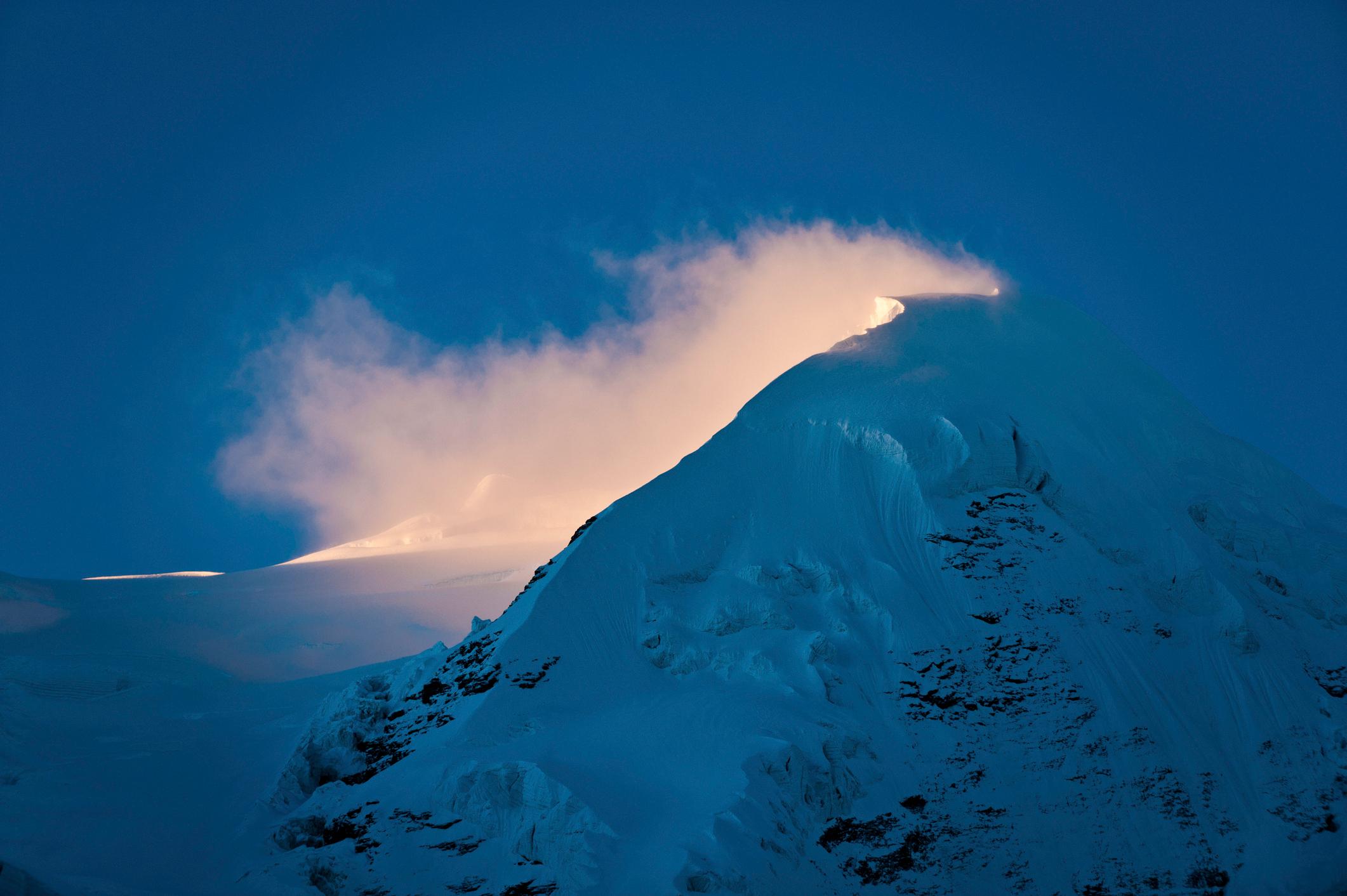
The best time of year to climb Mera Peak is during the spring or autumn.
“In March and April there will be more snow because it’s the end of winter - this is also the ski season,” Janbu says. “The weather conditions are perfect during these times. All the mountains are covered with snow. At lower elevations, when you’re trekking, the weather is great - everything is green. That’s why it’s the best season.
“In the Autumn season, which is shifting later - it used to be September, October, but now feels more like October, November - the mountains are clear, and the skies are blue. It’s also the festival season in October and November, when the villagers are back and spending time with their families. In October there will be less snow on the mountains than during the spring, and it will be comparatively less cold.
“Meanwhile, the summer time is the rainy season, and that means that the snow softens and melts - you can’t cross it using crampons. In winter the snow is too heavy and the weather too unpredictable. There might be a white out when you are on the mountain.”
Read more:
- Trekking in Nepal: Where do you Start?
- Trekking to Everest Base Camp: A Photo Story
- The City Guide to Kathmandu, Nepal
- The Annapurna Sanctuary Route: A Photo Story
Feeling inspired? Come and climb Mera Peak with us - you might even end up with Janbu and Dakman as your guides!



